JOTS v25n1 - An Overview of Performance Technology
An Overview of Performance Technology
Douglas R. Hotek and Michael R. White
As products in industry continue to increase in sophistication, performance requirements for people who design, manufacture, and market those products become more complex. To support today's complex performance requirements, many authors in the field of training and development have stated that there is a need to reinvent the training profession. They believe that industrial training programs must give way to a more complete performance technology that not only supports training, but other variables as well that affect the improvement of workers, their work, and their workplace ( Bassi, Benson, & Cheney, 1996 ; Clark & Sugrue, 1990 ; Lee & Zemke, 1995 ; Robinson & Robinson, 1995 ; Rosenberg, 1995 ). This article provides an overview of performance technology as a complete approach to improving human performance and an example in which the technology is used.
THE COMPLETE APPROACH
Performance technology (sometimes called human performance technology) is a relatively new field of study that has evolved over the past 30 years from research and practice in the behavioral sciences. Today, it is applied by many professionals in industry, known as performance technologists. They are concerned with improving the value of human performance in the workplace ( International Society for Performance Improvement [ISPI], 1997 ; Mager, 1995 ; Rosenberg, Coscarelli, & Hutchison, 1992 ; Stolovitch & Keeps, 1992 ). Performance technologists focus on improving the value of human performance through theoretical frameworks drawn from research in the disciplines of industry, education, and psychology to the human aspects of organizations, processes, and jobs ( Carr & Totzke, 1995 ; Rummler & Brache, 1995 ). To help explain a theoretical framework for performance technology, Deterline and Rosenberg ( 1992 ) and Rothwell ( 1996 ) used a model similar to the performance improvement cycle illustrated in Figure 1 consisting of three phases: performance analysis, needs assessment, and support intervention. The three phases serve as an organizing theme for this paper.
Phase 1: Performance Analysis
A performance analysis consists of three steps: (a) an assessment of what the desired performance of a population ought to be, (b) an appraisal of actual performance, and (b) an analysis of the gap between the desired and actual performance. A metric chart, such as that illustrated in Phase 1 of Figure 1, is used to measure the desired performance, the actual performance, and the gap between the two. If management considers the gap significant enough to merit an intervention, the needs of the population and the system in which they work must be assessed ( Rosenberg, 1995 ; Rossett, 1992 ).
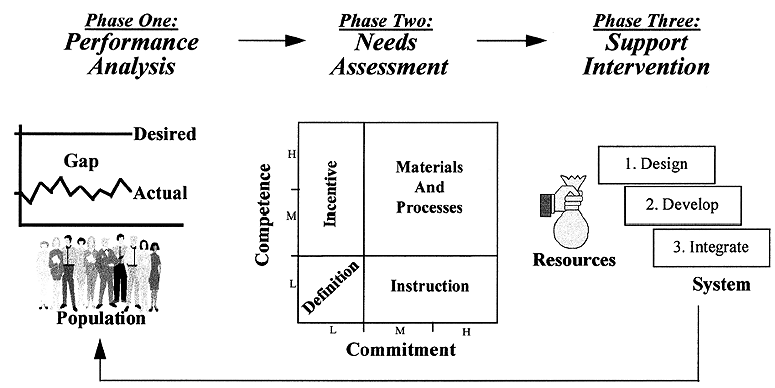
Figure 1. The performance improvement cycle.
Phase 2: Needs Assessment
The needs of a population are related to and dependent upon their competence and commitment to perform within their current system of work ( Hersey, Blanchard, & Hambleton, 1988 ; Rossett, 1992 ). The grid in Phase 2 of Figure 1 shows how four areas of need are related to a scale of low, medium, or high competence and commitment. For example, low competence and low commitment show that the work system needs better operational definition. The four areas of need (operational definition, incentive, materials and processes, and instruction) are but preliminary considerations to be further analyzed. Once an area of need has been determined, specific data within that area can be obtained through more detailed questioning of the population. The following are descriptions of what those specific needs might be.
Operational definition . Those who struggle with how they are to do their work, why they need to do it, or who they are doing it for are suffering from specific needs in the area of operational definition. Deming ( 1994 ) defined operational definition as "a procedure agreed upon for translation of concept into measurement of some kind" ( p. 105 ). Specific needs in the area of operational definition can be discovered by looking for such items as lack (or misunderstanding) of goals and objectives, policy and procedures, and job descriptions and standards ( Kirkham, 1992 ; Mager, 1984a , 1984b ).
Incentive . Generally, people need incentive to improve their performance ( Hersey et al., 1988 ). Specific incentive needs can be determined by asking questions designed to uncover a lack of feedback, positive or negative consequences, and good working relationships among the population ( Deming, 1990 ; Mager & Pipe, 1984 ; Stolovitch & Keeps, 1992 ; Yaney, 1997 ).
Feedback is something that tells people they either need to improve or they don't need to improve. Everyone needs feedback to keep good performance from deteriorating and bad performance from perpetuating. Feedback should be relevant, accurate, easy to understand, and provided on a regular basis ( Mager, 1992 ; Rummler & Brache, 1995 ).
Positive or negative consequences, or both, can be very powerful tools for changing people's performance. People who are positively reinforced (rewarded) for good performance will likely continue to perform well. On the other hand, people will most likely discontinue doing something if they are negatively reinforced (punished) for doing it. Negative reinforcement can, however, have an unfavorable impact on performance if people are punished for doing the right thing-such as when a person is branded as a "whistleblower" for reporting hazardous conditions or warned by colleagues to "slow down" or face increased quotas ( Deming, 1990 ; Mager, 1992 ).
High performers usually have good working relationships with their fellow workers. That is, they are not afraid to express their differences of opinions among their peers and management. They also tend to be willing to receive feedback about their strengths and weaknesses from those same people. People with good working relationships usually share a sense of mutual trust and respect ( Blanchard, Carew, & Parisi-Carew, 1996 ).
Materials and processes . Specific needs in the area of materials and processes can be determined through measurements and testing of quality, quantity, capability, and ergonomics. Materials can be deficient either in quality or quantity, or both. Processes may need better capability, capacity, or ergonomic soundness ( Deming, 1990 ).
To do any job right, a person's performance obviously depends on having the correct quality and quantity of materials on hand. It is not uncommon, however, for a person to be under the stress of a job deadline and wondering if the materials are going to show up from a vendor or previous stage of operation ( Bhote, 1989 ; Deming, 1982 ; Gitlow, Gitlow, Oppenheim, & Oppenheim, 1989 ).
People also need processes within their workplace (tools, machines, workstations) to be capable of performing as expected. With regard to process capability, Deming ( 1990 ) stated that "once a process has been brought into a state of statistical control, it has a definable capability. It will show sustained satisfactory performance" ( p. 339 ). With regard to ergonomics, the manufacturing process should be designed to fit the person, as opposed to fitting the person to the process. Statistics show that industry can improve worker performance and avoid high costs of cumulative trauma disorders (muscle and skeletal injuries and illnesses) by providing sound ergonomic practices in the workplace ( Grandjean, 1990 ; Ostrom, 1993 ; Smith, 1996 ).
Instruction . Information, knowledge, and skill acquisition are specific needs in the area of instruction. Training can improve knowledge and skills. Job aids can provide for informational needs ( Mager & Pipe, 1984 ; Stolovitch & Keeps, 1992 ).
People with modern training design and delivery skills usually reside in an organization's human resource development department. People with the latest expertise in the subject matter, however, usually reside within the line functioning departments. When the two departments work together to couple effective training design and development with subject matter expertise, resulting programs can be very effective ( Rummler & Brache, 1995 ).
If well designed, job aids can be a cost effective alternative to training. Job aids such as checklists, setup sheets, work instructions, and illustrations provide assistance for people during their work by reminding them of what they already know but have not memorized ( Mager, 1992 ; Sugar & Schwen, 1995 ). However, Deming ( 1982 ) stated that management should stop its "dependence on unintelligible printed instructions [and] institute modern methods of training on the job" ( p. 31 ). Schonberger ( 1986 ) noted that training "must somehow be streamlined so that it doesn't keep progress on hold" ( p. 208 ).
An instructional technology advancement that could be classified as a modern method of instruction is the electronic performance support system (EPSS). An EPSS is a combination of interactive computer software and hardware technologies linked as a system to directly support a person's instructional needs when, how, and where the support is needed ( Gery, 1991 ; Raybould, 1995 ; Reynolds, 1993 ). With integrated expert systems software, an EPSS can be designed to help users solve problems by providing "expert" instruction in specific areas quickly and accurately whenever and wherever the instruction is needed. By interacting with an expert system, a user can be provided with the experience of human experts, who have had their knowledge input into the system, without incurring the time and cost of actually meeting them ( Milheim, 1990 ; Rasmus, 1989 ; Wilson & Welsh, 1986 ).
When specific needs within the four general areas of operational definition, incentive, materials and processes, and instruction have been assessed, Phase 2 of the performance improvement cycle is complete. The next phase, support intervention, fulfills those specific needs.
Phase 3: Support Intervention
Support interventions should be managed like the integration of a new system. Deming ( 1994 ) defined a system as "a network of interdependent components that work together to try to accomplish the aim of the system" ( p. 50 ). He stated that the system must be designed so that its components can establish interrelationships and work together, as opposed to competing with each other. The illustration in Phase 3 of Figure 1 shows that by obtaining the necessary resources, components of a support intervention can be designed, developed, and integrated to cover the four general areas of need so that they work together to provide for the specific, and sometimes unique, needs of the population ( Mager & Pipe, 1984 ; Stolovitch & Keeps, 1992 ). Depending on the identified areas of need and sufficient financial resources, a single support intervention may be provided to cover one or more of the areas of need. Once a support intervention has been provided, it is important to evaluate its effectiveness by returning to Phase 1 (performance analysis) to see if the original gap between the desired performance and actual performance has been closed.
AN APPLICATION OF PERFORMANCE TECHNOLOGY
As part of its corporate strategy, a company that designs, manufactures, and markets complex commercial electronic products has developed a sophisticated expert system to help its sales representatives (product sellers) improve the sales forecasting process. By loading the expert system software into personal laptop computers operated by sales representatives, the expert system enables the sales representatives to forecast, in much detail and with great accuracy, the complex features and options desired by the company's customers. One purpose of the expert system is to reduce the cycle time of the company's sales forecasting process-a measure of time from when a sales representative becomes aware of a prospective sale to when the manufacturing organization is informed of that prospective sale. The advantage of a quick forecast cycle time is that it allows manufacturing to respond much quicker with a requirements plan for materials.
The company's performance problem . Since the development of the expert system, however, the company's manufacturing organization is still receiving too few sales forecasts. The company suspects that the sales representatives are not using the expert system. To simply train them on how to use it may not be the only, or best, solution to this problem. There may be other issues involved. By applying a performance technology approach, underlying issues can be discovered that lead to a more complete solution.
Phase 1: Performance Analysis
The first step in the company's performance analysis is to identify a sales forecasting goal, that is, the amount sales representatives should be forecasting. The second step is to identify the amount that sales representatives are actually forecasting. The third step is to analyze the gap between the forecasting goal and the actual forecasts (see Figure 2). Since the gap is considered by management to be significant enough to merit an intervention, the company begins Phase 2 of the improvement cycle.
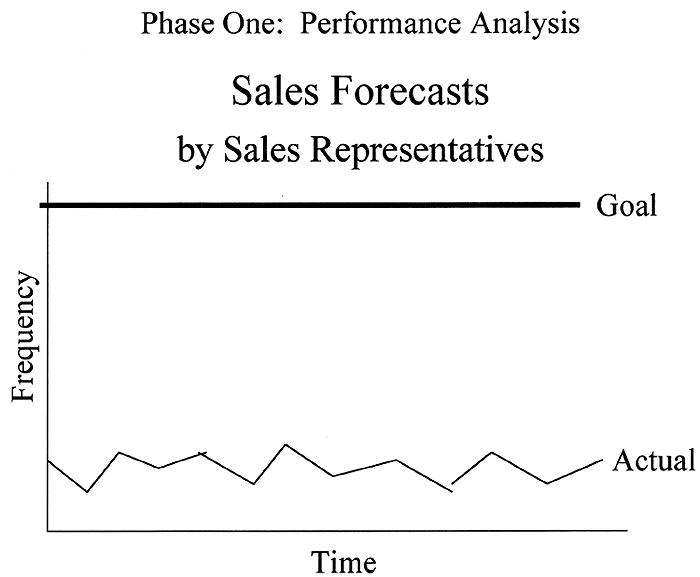
Figure 2. The company's performance analysis.
Phase 2: Needs Assessment
By applying the sales representatives' perceptions of their level of competence and commitment of using the expert system to a grid such as illustrated in Figure 3, their needs are generalized into four areas: operational definition, incentive, materials and processes, and instruction. Findings in one or more of these areas need to be addressed. By focusing on one area at a time, a more in-depth analysis of specific needs within that area is conducted.
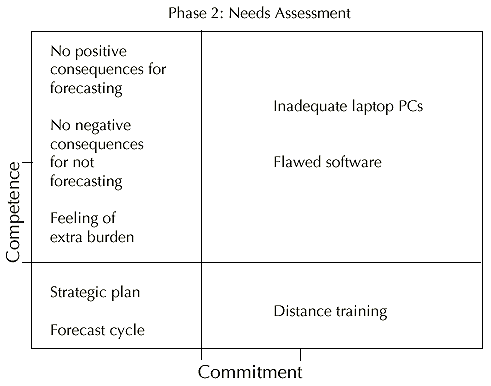
Figure 3. The sales representatives' needs are assessed.
Specifics of operational definition . Sales representatives lack a clear vision of the company's strategic business plan and how their use of the expert system plays into that strategic plan. They don't understand the concept of a "reduction in forecast cycle time" and how it can significantly affect manufacturing's ability to deliver orders on time. There is no official policy describing who is responsible for forecasting sales orders to manufacturing.
Specifics of incentives . There are no consequences (positive or negative) for sales representatives concerning their use of the expert system for sales forecasting. Management needs a better way to measure and evaluate the sales forecasting process. Sales representatives are measured and evaluated on how many products they sell, not on how much they forecast. They feel that time spent forecasting sales would be better spent selling their product. Before the expert system was in place, sales representatives had come to rely on the working relationships with field administrators to do sales forecasting tasks. By accepting the expert system, they feel as if they are accepting, in addition to their usual jobs, the extra burden of performing tasks belonging to the field administrator.
Specifics of materials and processes . Sales representatives work from "virtual" offices scattered throughout the United States. The expert system software is routinely updated to reflect new products and prices. To receive these updates, sales representatives need to "dial in" over telephone modem lines and download the software from the corporate office to their laptop PCs. Some laptops cannot efficiently and effectively perform these downloads because they are deficient in terms of microprocessor power and clock speed, random access memory, and modem speed. There are also flaws in the expert system software itself.
Specifics of instruction . Some sales representatives know how to use the expert system. Some of them do not. For those who do not, training is essential and provided as quickly as possible. Since sales representatives are physically stationed throughout the United States, a distance training method is most appropriate. Specific needs in all four general areas of operational definition, incentive, materials and processes, and instruction are assessed for the sales representatives, completing Phase 2 of the improvement cycle. Phase 3 is to provide an intervention to support those specific needs.
Phase 3: Support Intervention
As illustrated in Figure 4, an intervention to support the performance of the sales representatives is designed, developed, and integrated to cover their four general areas of need. The following are four components of the support intervention that work together like components of a system to fulfill the specific needs of the sales representative in each general area of need.

Figure 4. An intervention to support the performance.
Component 1 : Operational definition. The sales director documents a policy statement that describes the sales department's strategic plan and how sales forecasting is vital to the company's manufacturing plan. Sales managers hold regular meetings to communicate how and why sales representatives are to use the expert system to forecast sales orders. All members of the sales department collaborate to establish goals and objectives for measuring and evaluating their sales forecasting performance.
Component 2 : Incentive. Sales managers consider the achievement of sales forecasting goals during routine performance appraisals. During the appraisals, sales representatives receive regular feedback on how well they are achieving their sales forecasting goals and are rewarded accordingly.
Component 3 : Materials and processes. All sales representatives are issued new upgraded laptop PCs with enough power and clock speed, memory, and modem speed to solve problems associated with inefficient and ineffective downloading of the product and pricing software updates. A new flawless version of the expert system software is developed and tested. The information systems department includes the laptop PCs and software in its regular upgrade and maintenance program.
Component 4 : Instruction. Since the expert system contains proprietary information, a distance training method is developed internally. A sales representative who is proficient in the use of the expert system and a company specialist in computer-aided instruction work together to produce an interactive CD-ROM that is distributed to all sales representatives. Sales representatives receive training independently by installing the CD-ROM in their laptop PCs.
Return to Phase 1: Performance Analysis
Upon completion of the four components of the support intervention, the company returns to Phase1 (performance analysis). A review of its established performance metric (Figure 5) shows that the original gap between the goal and the actual sales forecasts has now been closed.
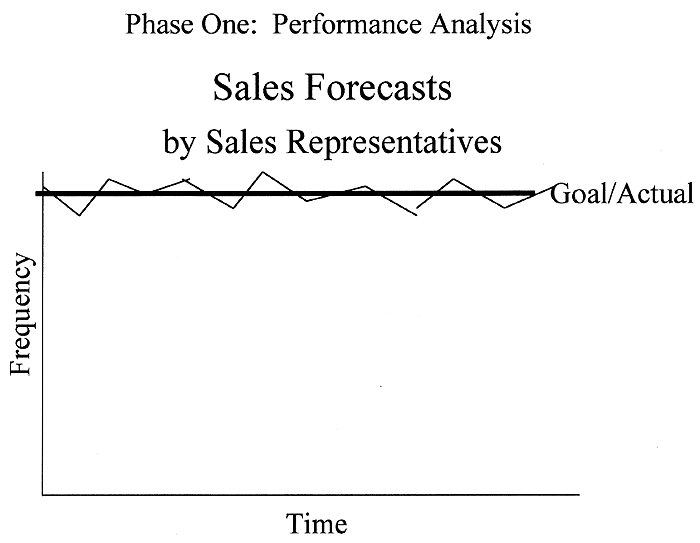
Figure 5. Upon completion of the four components.
In today's sophisticated world of industry, human performance issues are becoming increasingly complex. Rather than solely providing training programs, managers who are concerned with improving the value of human performance should apply a performance technology approach such as described in this paper. Through a theoretical framework such as the performance improvement cycle, managers can take a more complete approach to analyzing workers, their work, and their workplace, discover what underlying issues may exist, and ultimately provide solutions that encourage peak performance.
Mr. Hotek is a doctoral candidate in the Department of Industrial Technology at the University of Northern Iowa. He has been a practitioner of performance technology for the past 20 years in industry and is a member of the Pi Chapter of Epsilon Pi Tau. Dr. White is a Professor in the Department of Industrial Technology at the University of Northern Iowa. He is a member of Pi Chapter of Epsilon Pi Tau.References
Bassi , L. J., Benson, G., & Cheney, S. (1996). The top ten trends. Training and Development , 50(11), 2842.
Bhote , K. R. (1989). Strategic supply management: A blueprint for revitalizing the manufacturer-supplier partnership . New York: AMACOM, American Management Association.
Blanchard , K., Carew, D., & Parisi-Carew, E. (1996). How to get your group to perform like a team. Training and Development , 50(9), 3437.
Carr , C., & Totzke, L. (1995). The long and winding path (from instructional design to performance technology). Performance and Instruction, , 34(2), 48.
Clark , R. E., & Sugrue, B. M. (1990). New techniques for effective training management . Los Angeles: University of Southern California Press.
Deming , W. E. (1982). Quality, productivity, and competitive position . Cambridge: Massachusetts Institute of Technology.
Deming , W. E. (1990). Out of the crisis . Cambridge: Massachusetts Institute of Technology.
Deming , W. E. (1994). The new economics for industry, government, education (2nd ed.).Cambridge: Massachusetts Institute of Technology.
Deterline , W. A., & Rosenberg, M. J. (1992). Workplace productivity: Performance technology success stories . Washington, DC: International Society for Performance Improvement.
Gery , G. J. (1991). Electronic performance support systems: How and why to remake the workplace through the strategic application of technology . Tolland, MA: Gery Performance Press.
Gitlow , H., Gitlow, S., Oppenheim, A., & Oppenheim, R. (1989). Tools and methods for the improvement of quality . Homewood, IL: Irwin.
Grandjean , E. (1990). Fitting the task to the man (4th ed.). Bristol, PA: Taylor & Francis.
Hersey , P., Blanchard, K. H., & Hambleton, R. K. (1988). Contracting for leadership style: A process and instrumentation for building effective work relationships (2nd ed.). San Diego, CA: University Associates.
International Society for Performance Improvement. (1997). 1997-1998 Performance improvement resources and membership directory . Washington, DC: Author.
Kirkham , R. L. (1992). A better way: Achieving total quality . Salt Lake City, UT: American Training Alliance.
Lee , C., & Zemke, R. (1995). No time to train. Training , 32(11), 2937.
Mager , R. F. (1984a). Goal analysis (2nd ed.) . Belmont, CA: Lake Publishing.
Mager , R. F. (1984b). Preparing instructional objectives (2nd ed.). Belmont, CA: Lake Publishing.
Mager , R. F. (1992). What every manager should know about training: or "I've got a training problem" and other odd ideas . Belmont, CA: Lake Publishing.
Mager , R. F. (1995). Foreword. In W. Coscarelli, G. Geis, J. H. Harless, S. Shrock,& M. E. Smith (Eds.), Introduction to performance technology (Rev. ed., pp. ix-xi). Washington, DC: The International Society for Performance Improvement.
Mager , R. F., & Pipe, P. (1984). Analyzing performance problems (2nd ed.). Belmont, CA: Pitman.
Milheim , W. D. (1990). Expert systems in education and training: What instructional designers need to know . Washington, DC: National Society for Performance and Instruction.
Ostrom , L. T. (1993). Creating the ergonomically sound workplace . San Francisco: Jossey-Bass.
Rasmus , D. (1989). The expert is in. MacUser , 5(9), 136160.
Raybould , B. (1995, January). Making EPSS work for your organization. INFO-LINE, 501. (Available from American Society for Training and Development, Alexandria, VA.)
Reynolds , A. (1993, January). The top five questions about performance support systems. Technical and Skills Training , pp. 811.
Robinson , J. C., & Robinson, D. G. (1995). Performance takes training to new heights. Training and Development , 49(9), 2124.
Rosenberg , M. J. (1995). Performance technology, performance support, and the future of training: A commentary. Performance Improvement Quarterly , 8(1), 9499.
Rosenberg , M. J., Coscarelli, W. C., & Hutchison, C. S. (1992). The origins and evolution of the field. In H. D. Stolovitch & E. J. Keeps (Eds.), Handbook of human performance technology (pp. 1431). San Francisco: Jossey-Bass.
Rossett , A. (1992). Analysis of human performance problems. In H. D. Stolovitch & E. J. Keeps (Eds.), Handbook of human performance technology (pp. 97113). San Francisco: Jossey-Bass
Rothwell , W. J. (1996). ASTD models for human performance improvement: Roles, competencies, and outputs . Alexandria, VA: American Society for Training and Development.
Rummler , G. A., & Brache, A. P. (1995). Improving performance: How to manage the white space on the organization chart (2nd ed.). San Francisco: Jossey-Bass.
Schonberger , R. J. (1986). World class manufacturing: The lessons of simplicity applied . New York: Free Press.
Smith , R. K. (1996). CTDs: Lower the risk; raise productivity. Assembly , 39(4), 2228 .
Stolovitch , H. D., & Keeps, E. J. (1992). What is human performance technology? In H. D. Stolovitch & E. J. Keeps (Eds.), Handbook of human performance technology (pp. 3-13). San Francisco: Jossey-Bass.
Sugar , W. A., & Schwen, T. M. (1995). Glossary of technical terms. In L. Kelly (Ed.), The ASTD technical and skills training handbook (pp. 581591). New York: McGraw-Hill.
Wilson , B. G., & Welsh, J. R. (1986). Small knowledge-based systems in education and training: Something new under the sun. Educational Technology , 26(11), 713.
Yaney , J. P. (1997). Questionnaires help in problem-analysis. Performance Improvement , 36(8), 2833.
The company described in this paper is unnamed because particular information in the scenario, when associated with the company's name, may be useful to its competitors.
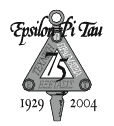

TS